Even Adults Can’t Answer This – Cikgu Fadli Condemns Year 3 Maths Activity On Currency
The currency exercise in the Year 3 workbook asked students to list the exchange rate of several countries to RM1.
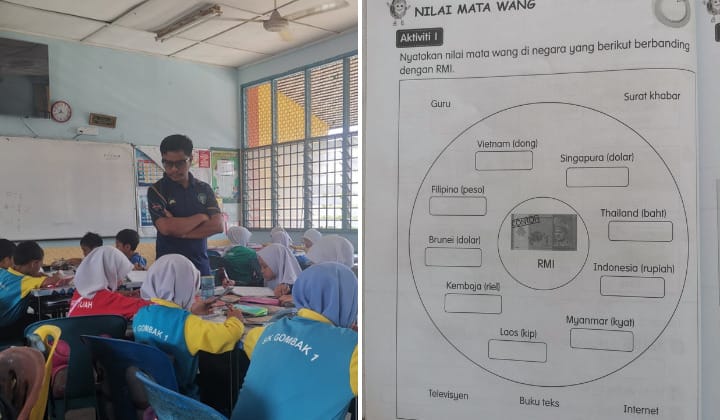
Subscribe to our FREE Newsletter, or Telegram and WhatsApp channels for the latest stories and updates.
Maths has always been a difficult subject for some. Especially when the numbers started to have alphabets in them. It’s bonkers!
However, certain maths levels are taught to certain age groups to make sure they understand the topic comprehensively. So it makes sense that primary school students have easy-level ones and secondary school as well as tertiary schools have challenging ones.
But a particular local educator who’s been making headlines these days, Mohd Fadli Salleh or Cikgu Fadli says that some topics in the primary school syllabus are just way above their level.
Previously, he even had to go to court to stand up against the Education Ministry (KPM) for the student’s rights.
READ MORE: Local Teacher Faces Threats Of Expulsion And Demotion For Speaking Up For Students
READ MORE: Cikgu Fadli Freed Of All Charges, Will Not Face Any Disciplinary Actions
Currency for year 3 students
This time, in his recent (25 Sept) Facebook posting, he talks about the currency topic in the standard 3 workbook that is based on their textbook.
Looking in the workbook that the KPM themselves provide to students (not from a third party), he saw a page where students need to state the exchange rate of the currency in the following countries compared to RM1.
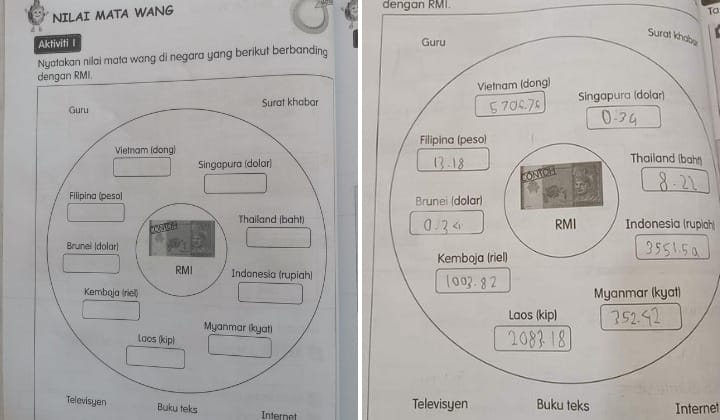
In a circle, the page then listed Vietnam’s Dong, Singapore’s Dollar, Thailand’s Baht, Indonesia’s Rupiah, Myanmar’s Kyat, Laos’s Kip, Cambodia’s Riel, Brunei’s Dollar and Phillippines’s Peso with a blank space for the conversion rate from Malaysia’s 1 Ringgit.
Outside the circle, there were five sources where students could refer to for answers, which include teachers, newspapers, television, textbooks and the Internet.
He claimes even bank officers couldn’t fully answer the questions unless they Googled. He questioned the importance of this topic for 9-year-olds and usually skipped this lesson as he didn’t think they needed to know about it just yet.
Plus, he said the correct answer could vary as it follows the current exchange market.
Students follow their parents when travelling abroad, so they need to know – Higher-ups
Last year in October, he actually mentioned this particular page before. That time, he said this type of activity shouldn’t be inside a 9-year-old’s syllabus and a lot of teachers criticized this when the syllabus was first upgraded.
He claimed that the higher-ups said not to underestimate the ability of our students as some of them are more advanced than we are.
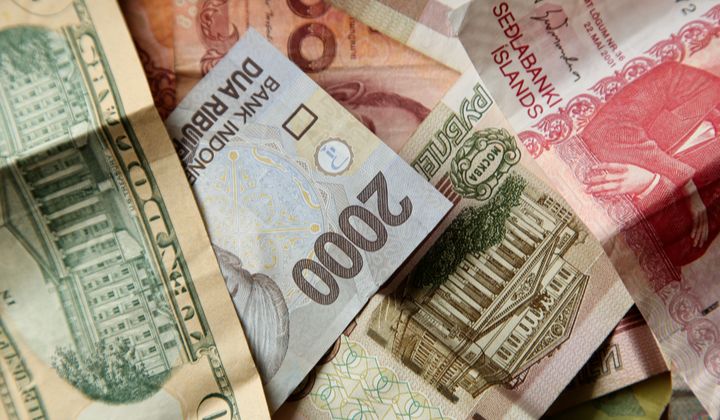
“Many of our students travel abroad with their families every year. They must know this currency exchange rate. This knowledge is important for our students.
“Teachers need to be creative. Teachers need to understand the National Curriculum and the goals of our country’s education,” stated Cikgu Fadli when he explained the reasons they gave.
Although he agreed that we cannot underestimate our students nowadays, he felt that it’s unjust to put something in the wrong place. Children their age are not supposed to have full knowledge about Asian and Western currencies as well as exchange rates. Even some adults don’t.
Parents & netizens agree
In his Facebook comment section, most parents agree with his predicament and say that even they’re struggling to help their children with their homework.
Additionally, even teachers said that they’re blamed for not explaining the topic according to their students’ level.



Other people joked that whoever got the answer right could straight away be a bank officer or play forex.


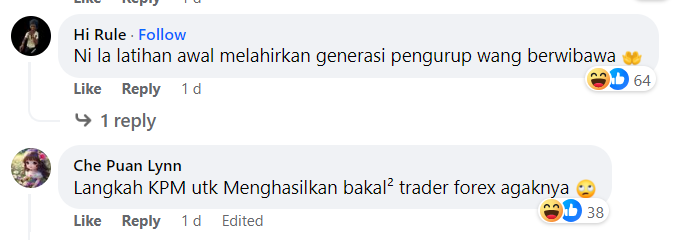
However, some people say that it’s a good way to introduce economic elements to students that age given the particular question won’t be in the exam.

Plus, the answers are apparently in the textbook, if students can’t google them. It’s just a way for them to compare, not memorise or calculate, said one user.

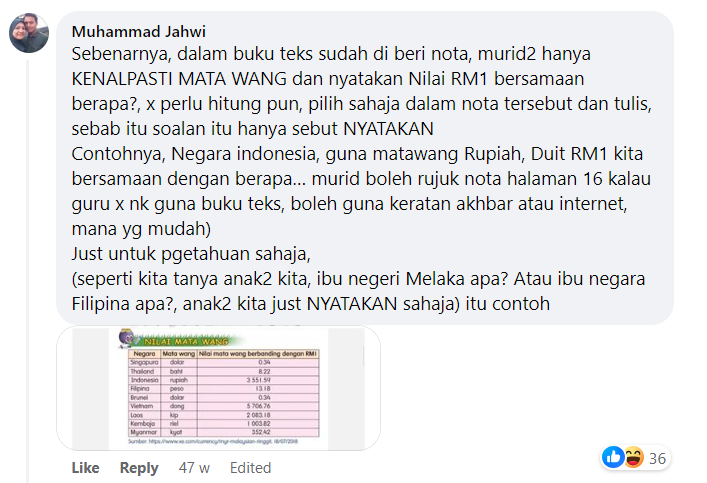
However, Cikgu Fadli refuted the comment saying the answers should be wrong as currencies change according to the market. Even if they did refer to the table, he still insists that this topic is a bit too far-fetched for 9-year-olds.

So, what do you think of the whole fiasco?
Should your child know the current exchange rates of our neighbouring countries? Or should they just stick with fractions, decimals and percentages?
Do you even know the current exchange rate of Cambodia?
READ MORE: Teacher Struggles to Teach High-Level Math Problem To Third-Grade Students
READ MORE: Father Shows Grade 1 Syllabus In US, Simpler Than Malaysian Syllabus For Standard 1
Share your thoughts with us via TRP’s Facebook, Twitter, Instagram, or Threads.




![[Video] Abang Kantin Dipuji Lepas Halalkan Makanan Murid Sekolah Tak Cukup Duit](https://www.therakyatpost.com/wp-content/uploads/2023/03/image-7.jpg)
